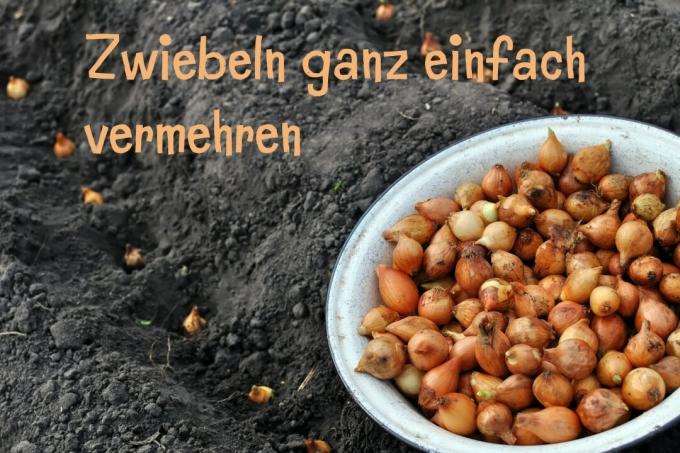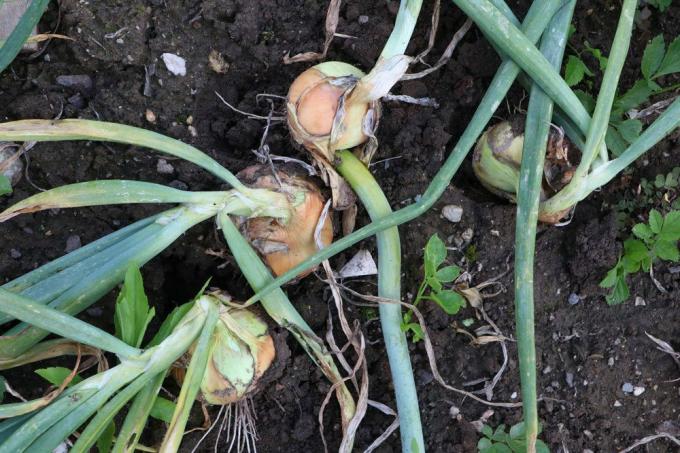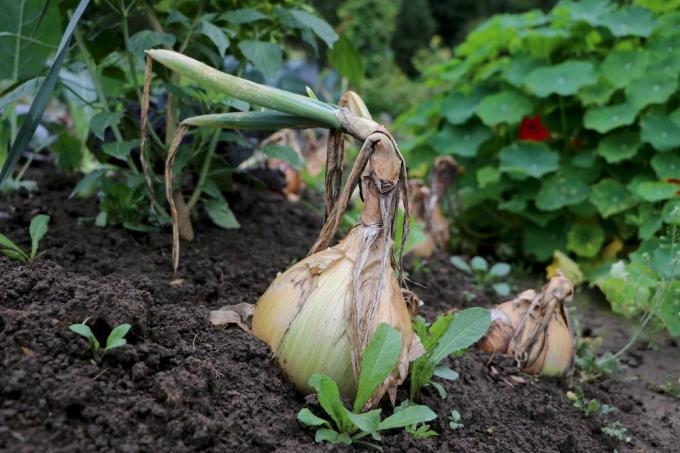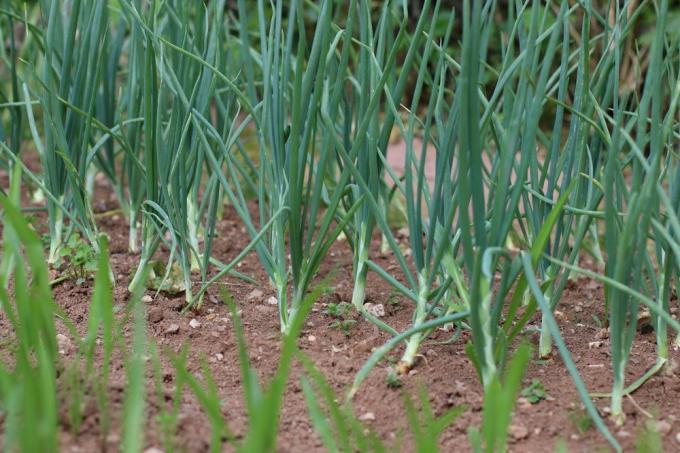
table of contents
- Increase by sowing
- Carry out a germ test
- Best time to sow
- Preculture
- Propagate via direct sowing
- Pull your own onions
- Propagate over onion sets
- frequently asked Questions
Onions are one of the most popular and versatile vegetables. Whether raw, fried or braised, they give many dishes a special flavor. Cultivation and propagation in the home garden are unproblematic.
In a nutshell
- The onion (Allium cepa) belongs to the leek family (Alliaceae)
- A distinction is made between table and vegetable onions
- Onions are rather small and flavorful, most commonly grown in Germany
- Vegetable onions are larger, milder and significantly heavier
- Different colors, shapes, degrees of sharpness and sweetness
- Propagation via seeds and cuttings or Onion sets possible
Increase by sowing
Corresponding seeds can be purchased or obtained from existing specimens. In order to be able to sow in spring, they must be taken out of the ground together with the flowers in autumn of the previous year and hung upside down to dry. The dry inflorescences are dried and then stored in a cool and dry place for the winter. About a month before sowing, put them in a warmer place with temperatures of at least 25 degrees.

Tip: To catch the seeds, you can, for example, pull a paper bag, not foil, loosely over the inflorescences.
Carry out a germ test
Onion seeds usually remain viable for up to three years. However, not every seed germinates. It is therefore advisable to test the germination capacity before sowing. All you need is a bowl of water and the seeds.
- Fill the bowl with water
- Put the seeds in the water and wait
- Germable seeds sink to the bottom of the bowl quite quickly
- Non-germinable swim on the surface
- Can be fished there with a fine hair sieve
- Then pour the water with the good seeds through a sieve
- Germable seeds remain in the sieve
- Let the seeds dry for a while and then sow them
Best time to sow
The right time depends on the variety. Are you talking about summer or winter onions or about growing your own onion sets from the seeds? Summer onions are sown as early as possible, ideally from March to April and winter onions between mid and late August. To grow onions yourself, the seeds should be planted between the end of March and April.

Preculture
In order to be able to harvest leeks as early as possible, a preculture is ideal for propagation. As early as mid-February, young plants can be sown on the windowsill or in a heated greenhouse.
- To do this, fill small pots with growing medium
- Spread seeds on it
- Onions, four to six seeds per pot
- Vegetable onions, one or two seeds
- Seeds Insert about an inch deep
- Cover with substrate and moisten
- Row spacing of 20-30 cm is recommended in the greenhouse
Depending on the type of onion, the optimal germination temperature is 15-20 degrees and the germination time between 14 days and three weeks. At first, small, thin, stalks appear. As soon as they are a bit stronger, depending on the variety, they can be separated or cut down to five to ten centimeters. be planted out.
Tip: In order to have a positive influence on the development of onions and to protect against onion or carrot flies, a mixed culture with carrots is recommended.
Propagate via direct sowing
For a harvest in the same year, sowing in the garden should be done early and preferably in a sunny location and in loose, humus-rich and, if possible, unfertilized soil.

- First make grooves in the ground
- About an inch deep
- Spread seeds in it, not too dense
- Cover with earth and press it down
- Carefully water with the watering can
- Germination occurs after two to four weeks
- Separate young seedlings to onion starch
- Sow and harvest spring onions within one year.
Tip: Onions obtained by sowing usually have a longer shelf life than those obtained from onion sets. Late varieties in particular can be stored until March of next year.
Pull your own onions
Onions for the coming year are sown directly in the bed at the end of April. The onions are harvested as soon as they have reached the size of a hazelnut. In order to be able to stick them in the next year, let them dry and overwinter them in a cold, but frost-free, and dry place. About four weeks before planting, put them in a warmer place with temperatures of at least 25 degrees.
Tip: Under no circumstances should these vegetables be planted or sown where leeks, chives, garlic or chives were previously located (break from cultivation of at least five years).

Propagate over onion sets
Winter onions for the spring harvest are planted from August to October. They stay in the bed through winter and ripen in spring. In the case of summer onions for the autumn harvest, the time corresponds to that of sowing. Even if onions are middle and low eater, they should not be fertilized. It is best to make grooves again, this makes it easier to insert. You put it so deep that the top third of the onion can still be seen. Finally, the whole thing is watered.
frequently asked Questions
Basically, you can plant them like classic onion sets. However, it is not worth it, because these much larger specimens cannot be used to harvest an onion. Only fresh green forms that can be harvested and used.
Onions are definitely the more convenient option. You save sowing and separating, because the already pre-cultivated onions only have to be plugged. However, onions are more expensive than seeds. In addition, onions produced by sowing have a much longer shelf life.
The bed in question should be weeded and the soil loosened well. It is advisable to give an organic fertilizer in the previous year, but in no case fertilize before sticking.



